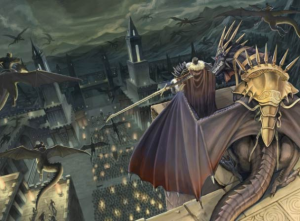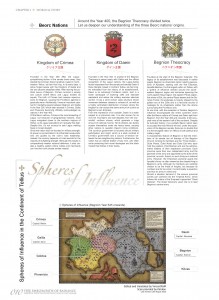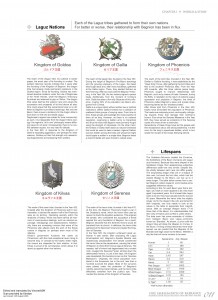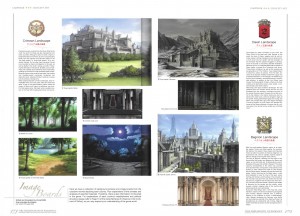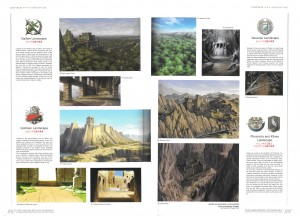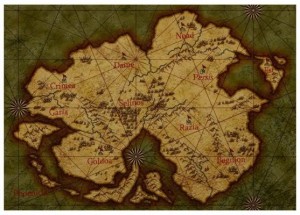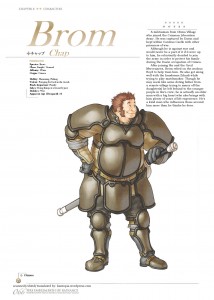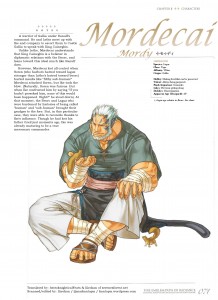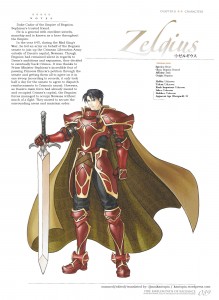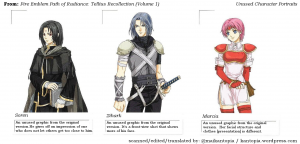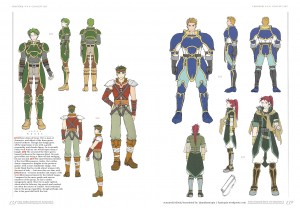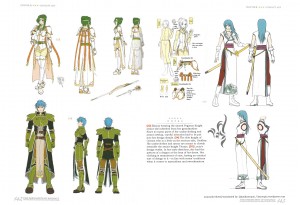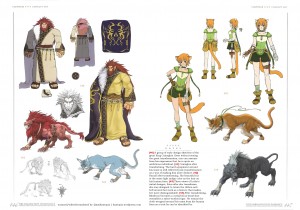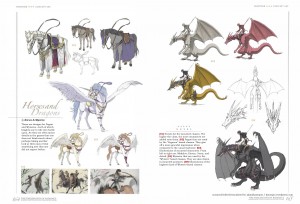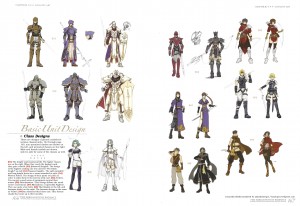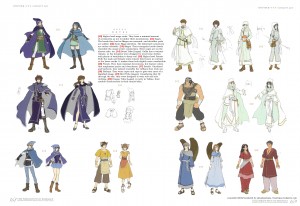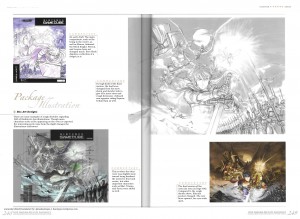The Tellius Recollection translation project has just passed its second week–and boy was it a busy week! Again, for your convenience, here’s another recap of last week’s translations and findings.
Like always, you can find the latest translations and comments on our forums or Kirokan’s website, Kantopia.
Following on from last week‘s history and timeline of Tellius, we have translations of the individual countries’ histories and backgrounds.
Warning: This article and the links provided contain spoilers!
A quick disclaimer: Some of the information in the book seems to be based on the game’s design documents, which often differ slightly from the final product. This is true for the characters’ hobbies, likes, dislikes etc. but may also extend to things like history.
In the above two pages, you can find information explored in the game and supplementary materials, but there’s a lot of previously unseen information as well, some of which is at odds with the in-game information.
Ignoring Begnion for a moment, Crimea is stated as being a nation that pioneered Beorc and Laguz co-existence, but as fans have pointed out, the relationship between the two races isn’t quite as harmonious at the time of Path of Radiance.
Gallia and Crimea are allied nations, that cannot be denied. However, this alliance in reality binds only the royal families. It is not respected by our citizenry.
–Caineghis in Chapter 9: Gallia.
A similar oddity can be seen in Gallia, where apparently 20% of its population are Beorc emigrants from Crimea. While there’s nothing in-game to directly contradict this claim, it’s doubtful considering the Gallians’ animosity against the Beorc.
In my heart of hearts, I would like to take guardianship of Princess Elincia and assist in the rebuilding of Crimea. However, anti-beorc sentiment is running high here in Gallia.
–Caineghis in Chapter 9: Gallia.
Possibly early on, Crimea and Gallia were intended to have a much more stronger relationship, which may have helped to explain how Greil’s family managed to find refuge in Gallia.
Another curious matter is the apparent number of survivors of the Serenes Massacre. In the game, it’s implied that only Reyson, Leanne, Rafiel and their father survived, but the book claims there were under a hundred, which suggests there was a lot more.
Clearly, the number was revised to make the event all the more shocking. In addition, perhaps the developers couldn’t think of a way to implement the non-royal herons into the story, despite working on their graphical assets.
Moving on ahead, we have two similar pages detailing the landscapes of the eight nations.
There are some interesting nuggets related to the climates and economy of each nation, but the most notable detail is something we skipped over earlier–and that’s the territories of Begnion that do not appear in the final game: Persis, Noad, Razia and Est.
Actually, some studious fans may recognise these unused locations from the beta version of Tellius’s map. Thanks to the book, we now know these locations were originally going to be sub-territories of Begnion.
Now, Persis does actually appear in the games, as Sephiran’s domain, but it’s not physically labelled on the map (in English). Presumably it was going to be much more important, especially considering Ike’s family was once connected to Persis.
As for the others, Razia likely became the Grann Desert, Est obviously became Asmin (the realm of Duke Hetzel), while Noad was probably axed because it was too similar to Daein.
Next, we have a couple of more character profiles. As we mentioned before, if you’re interested in a particular character’s profile, Kirokan is currently taking requests over on the forums.
Previously, Petrine’s profile explicitly revealed her Laguz heritage, but no such information is included in Zelgius’s profile. However, his full profile is being saved for the upcoming Radiant Dawn volume, so hopefully it’ll be mentioned there.
Besides these, we have a plethora of character body sprites, which Kirokan has helpfully uploaded here. You may notice the sprites go slightly further down compared to in-game, which is quite cool.
One more thing: The book points out that there are three unused sprites, of Soren, Zihark and Marcia. Soren and Marcia’s sprites have a few stylistic differences, but Zihark’s pose and expression is very different, perhaps suggesting a change in personality?
From here, Kirokan has undoubtedly been working extremely hard to give us a lot of new concept art translations.
Compared to earlier concept arts, there aren’t a lot of surprises here, but one can still appreciate the fine level of detail.
As well as being generally intriguing, the class concept art is very interesting because it seems to describe a pseudo 3-Tier class system, before Radiant Dawn fully-fleshed out the idea.
Towards the left half of the first page, we see the progression of the Soldier and Knight classes with the unpromoted version on the left and the higher-ranked versions to the right.
What’s most peculiar is that the third Soldier variant resembles Radiant Dawn’s 3rd Tier Sentinel, especially with the gigantic shield. In addition, the “3rd Tier” Knight was developed into the Black Knight’s design.
This trend also extends to the Thief, Priest and Mage classes. There is a basic version of the class, then a slightly more complicated “higher rank” version and then a version that’s remarkably different–most likely the actual “promoted” form.
It’s also evident, by referring to previous character concept arts, that Elincia and Elena were intended to be “higher rank” Priests. In addition, Soren seems loosely based on the “higher rank” Mage, while Ilyana and Tormod are more akin to the basic versions.
Whether the “higher rank” classes were simply planned to be an aesthetic feature or had better abilities is unclear.
Looking at the game’s coding, there are unused Mage classes that specialise in a single element (fire, thunder or wind), which could’ve been based on the basic Mages in the concept art.
To finish off, here’s a look at the process of designing Path of Radiance’s boxart. If you missed it, the Making of Fire Emblem did something similar for Binding Blade.
